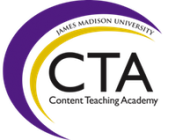Scientific Process and Experimental Design
Students will be able to identify lab safety rules and equipment.
Students will be able to identify the steps to the scientific method.
Students will be able to conduct a laboratory experiment using appropriate safety equipment and lab procedure.
Materials Needed: lab safety video, lab safety identification handout, lab safety rap and questions, poster board, cloze notes handouts, Simpson Scientific method handout, lab materials (beaker, test tube stands, test tubes, graduated cylinder, pipets, food coloring, lab write up handout)
